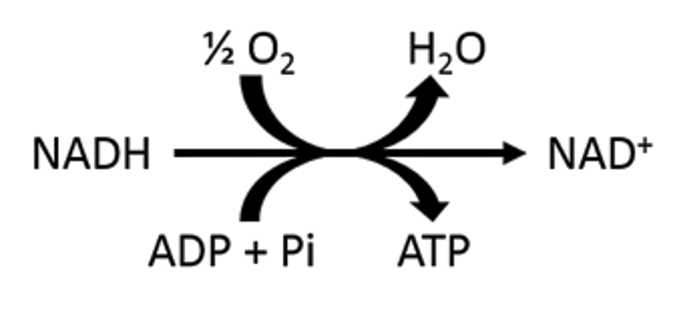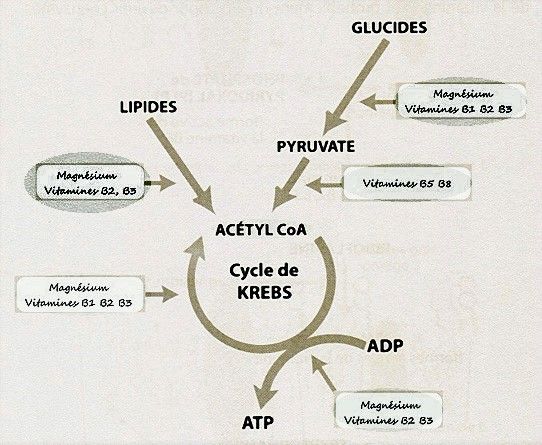Swollen legs from sitting
-
Peatbot.com: To lessen swollen legs from sitting, you can try the following strategies based on the provided context:
-
Increase Sodium Intake: Ensure you have enough sodium in your diet, as sodium helps maintain fluid balance in the bloodstream. A deficiency can lead to water accumulating in the lower extremities.
-
Adequate Protein Intake: Make sure your protein intake is sufficient. Proteins like albumin help keep fluid in the blood vessels. If protein levels are low, fluid can leak into surrounding tissues, causing swelling.
-
Consider Baking Soda: Some people find that taking a small amount of baking soda (sodium bicarbonate) can help reduce swelling. It may lower aldosterone, a hormone that can contribute to fluid retention and inflammation.
-
Monitor Estrogen Levels: High estrogen levels can cause fluid retention and make blood vessels leaky. If you suspect hormonal imbalances, it might be worth discussing with a healthcare provider.
-
Exercise Regularly: Even simple movements like standing up, walking around, or doing leg exercises can help improve circulation and reduce swelling.
-
Elevate Your Legs: When sitting for long periods, try to elevate your legs to help reduce swelling by promoting blood flow back to the heart.
-
Stay Hydrated: Drinking enough water can help maintain proper fluid balance in the body.
-
Avoid High-Phosphate Foods: If increasing protein, choose sources low in phosphate, as excessive phosphate can be harmful to the kidneys and contribute to swelling.
-
Consider Nutrient Intake: Ensure adequate intake of vitamins and minerals like vitamin A, zinc, vitamin C, and rutin, which support blood vessel integrity and protein synthesis.
-
Check Thyroid Function: Low thyroid function can contribute to swelling. If you suspect thyroid issues, consult with a healthcare provider.
Implementing these strategies may help reduce leg swelling from prolonged sitting. If swelling persists, it is advisable to seek medical advice.
-
-
@LucH Thank you. Very valuable.
Relatively early on my bioenergetics / ray peat adventure. Low thyroid and progesterone levels have been my suspicions for the underlying cause of the leg swelling since I came to this. With other typical signs it's clear to me that I would benefit from taking thyroid and progesterone.More sugar helped significantly for the swelling at first but effect weaned off after a few weeks. Will keep the earthing up as long as we're above freezing. Otherwise sticking to his diet recommendations for hypothyrodism.
-
@DavidPS Thank you! Have covered 1.-9. quite well. Tested for 10. Now onto meds.
-
@LucH why only low dose niacinamide?
-
@Razvan said in Swollen legs from sitting:
why only low dose niacinamide?
Why not high dose B3?
High dose B3 is going to enhance lipolysis at the expense of glycolysis. If not enough glycogen is available, it’s going to make things worse on 2 levels.
Normally / usually it shouldn’t last more than 2 hours long, theoretically, the effect of B3 on glycolysis. But then how do we explain I gain weight when I take 100 mg of B3 at breakfast time, with a 500 K/cal. meal. So I don’t trust the theory and I follow my experience.
So you’ve got a release of fatty acids into the blood stream, with what has been stored in the adipocytes, and of course arachidonic acid from the AA cascade when you stress, due to a possible lack of glucose (glycolysis absent). The forumer needs to practice a relaxation technique, as seen.
RP has said it would be fine to take 10 mg B3 from time to time – so not every day – to enhance mitochondrial exchanges.
1.2 mg is the RDA. Not useful. 100 mg is what I take (only niacinamide) (with some TMG 500 mg 2x/d) to optimize energy level (B1 B2 B3 B6 + ...) Not adviced here 100 mg if the patient suffer from low grade inflammation. All the less if we want to promote carburetion. Glucose rather than starch, if we have the choice.
So, once or twice a week 10 mg niacinamide shouldn't make trouble.
As it is under 20-25 mg level, niacin could be ok too (flush). -
@LucH Why do you recommend Niacinamide? Why in this case specifically?
-
@benrickert said in Swollen legs from sitting:
Why do you recommend Niacinamide? Why in this case specifically?
Short answer
“Some of its actions resemble a hormone. (…) Excitation must be in balance with cell’s energetic resources, and niacinamide can play multiple protective roles, decreasing excitation, increasing energy production, and stabilizing repair systems.” Ray PEATUnder stress reaction cells waste niacinamide NADH. NAD+ impacts energy metabolism, DNA repair, epigenetic modification, inflammation, circadian rhythm and stress resistance.
https://pmc.ncbi.nlm.nih.gov/articles/PMC7539288/ (you can skip the reading of the link).If you're well awoken
 (you can skip): Info on metabolism of B3
(you can skip): Info on metabolism of B3
Terminology (We can skip this step but not if we want to search further on internet)- Terminology 1: Niacin is often used as a generic name (all forms). Be careful when buying.
Nicotinic acid = niacin (skin flush if > 20-25 mg)
Nicotinamide = niacinamide.
Niacinamide is the precursor of 2 coenzymes: NAD+ and NADP+ (adenine dinucleotide phosphate) used when metabolizing macro-nutrients in Krebs cycle. - Terminology 2: NAD (= active form of B3)
NAD (Nicotinamide adenine dinucleotide) = coenzyme present in all living cells. NAD exists in an oxidized form, denoted NAD+, and a reduced form, denoted NADH. NAD functions primarily as an electron carrier in redox reactions.

All tissues in the body convert absorbed B3 into its main metabolically active form, the coenzyme nicotinamide adenine dinucleotide (NAD).
https://ods.od.nih.gov/factsheets/Niacin-HealthProfessional/
Note: Chris Masterjohn is going to nuance this.

Excerpts from RP
Carbon dioxide (CO2), niacinamide (B3) and aspirin are protective towards mitochondrial respiration.
http://www.functionalps.com/blog/2012/03/20/ray-peat-phd-on-therapeutic-effect-of-niacinamide/“Niacinamide, one of the B vitamins, provides energy to the mitochondrial system. Under stress and strong excitation, cells waste niacinamide NADH, but niacinamide itself has a sedative anti-excitatory effect, and some of its actions resemble a hormone. Estrogen tends to interfere with the formation of niacin from tryptophan. Tryptophan, rather than forming the sedative niacin (pyridine carboxylic acid), can be directed toward formation of the excitatory quinolinic acid (pyridine dicarboxylic acid) by polyunsaturated fats. Excitation must be in balance with cell’s energetic resources, and niacinamide can play multiple protective roles, decreasing excitation, increasing energy production, and stabilizing repair systems. The state of excitation and type of energy metabolism are crucial factors in governing cell functions and survival.”
*) Niacinamide helps to lower FFA
“It’s the stored PUFA, released by stress or hunger, that slow metabolism. Niacinamide helps to lower free fatty acids (in the blood flow), and good nutrition will allow the liver to slowly detoxify the PUFA, if it isn’t being flooded with large amounts of them.A small amount of coconut oil with each meal will increase the ability to oxidize fat, by momentarily stopping the anti-thyroid effect of the PUFA.
Aspirin is another thing that reduces the stress-related increase of free fatty acids, stimulating metabolism. Taking a thyroid supplement is reasonable until the ratio of saturated fats to PUFA is about 2 to 1.”
- Terminology 1: Niacin is often used as a generic name (all forms). Be careful when buying.
-
According to Chris Masterjohn (you can skip this reading if you take niacinamide)
Niacin gets converted into niacinamide in the liver. However since the liver can only process 40mg per hour, anything above that gets into the blood stream as niacin (nicotinic acid) which has physiological effects on immunity, lipid metabolism, and causes a flush. The conversion of niacin into niacinamide requires glycine, and you can sap your glycine / glutathione levels.
These effects are separate to the actions in the body after it's converted to niacinamide.
Both forms need to be methylated in order to be cleared from the body, and the pathway primarily seems to involve TMG/betaine (which is methylated glycine). Hence Masterjohn recommends taking TMG along with any form of B3, and perhaps glycine or collagen with the niacin form.Note: The info is rather esoteric and not always very clear. Keep aspirin not far

-
@LucH Thank you! Will read and think more about it.
Was just thinking, is swelling on the cellular level and swelling of the lower legs the same thing? Can they be two different things? -
@benrickert said in Swollen legs from sitting:
Can they be two different things?
Yes, but there is a tight interconnection.
And if I were you, I'll get informed on how to balance a higher level with sodium.
Don't believe what you're going to read about excess salt.
Here is some useful info, on my forum.-
Understanding how sodium works – Importance of sodium in cellular exchanges
https://mirzoune-ciboulette.forumactif.org/t1362-comprendre-le-fonctionnement-du-sodium?highlight=sodium (In French; translator needed)
Extract:
“Salt can help lower inflammation, increase womb healing, metabolize better and therefore fuel well, help you sleep, improve muscle function, and have a positive effect on your blood pressure. »
Kate DEERING. -
Sodium and Potassium Balance – Compensation by the body (In French)
https://mirzoune-ciboulette.forumactif.org/t1068-equilibre-sodium-et-potassium-compensation-par-lorganisme?highlight=sodium
Key ideas
• The pH of the cellular environment is decisive for proper enzymatic functioning. The body will therefore regulate this pH carefully. If it is overwhelmed, a host of pathologies could make their bed, sometimes in a delayed manner...
• The body will seek to compensate with different buffer systems.
• To correct the terrain, potassium is the key nutrient. But every time you ingest excess salt, by considering your potassium reserves, you will disrupt this balance.
• The metabolism will correct the situation with an H+ ion to maintain the correct gradient: An H+ ion will replace a K+ ion. In doing so, the pH is modified and moves towards acidosis.
• The movements of water across cell membranes follow the movements of sodium, which themselves are only possible if a sodium ion is exchanged for a potassium ion (K+) or a hydrogen ion (H+) for reasons of electro-neutrality. Thus, the distribution of water in the body is a function of these ion exchanges. -
Salt – Against the grain! What to do in case of water retention? (In French)
https://mirzoune-ciboulette.forumactif.org/t599-sel-a-contre-courant-que-faire-en-cas-de-retention-deau?highlight=sodium
Quote:
“One of the things that happen when there isn’t enough sodium in the diet is that more aldosterone is synthesized.
Aldosterone causes less sodium to be lost in the urine and sweat, but it achieves that at the expense of the increased loss of potassium, magnesium, and probably calcium. The loss of potassium leads to vasoconstriction, which contributes to heart and kidney failure and high blood pressure. The loss of magnesium contributes to vasoconstriction, inflammation, and bone loss. Magnesium deficiency is extremely common, but a little extra salt in the diet makes it easier to retain the magnesium in our foods."
By Ray Peat, PhD. Salt, energy, metabolic rate, and longevity 2007. -